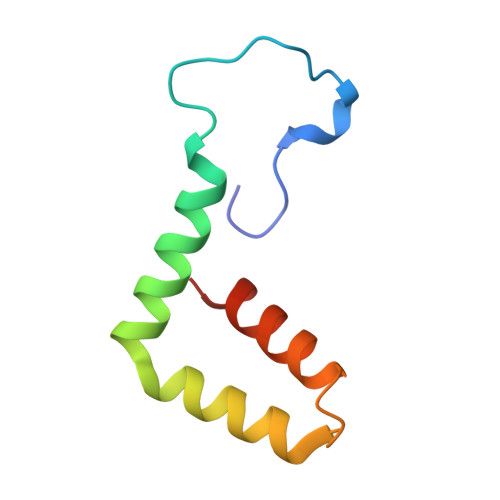Replication is the key barrier during the dual-host adaptation of mosquito-borne flaviviruses.
Zhang, Y., Liang, D., Yuan, F., Yan, Y., Wang, Z., Liu, P., Yu, Q., Zhang, X., Wang, X., Zheng, A.(2022) Proc Natl Acad Sci U S A 119: e2110491119-e2110491119
- PubMed: 35294288
- DOI: https://doi.org/10.1073/pnas.2110491119
- Primary Citation of Related Structures:
7ESD - PubMed Abstract:
Mosquito-borne flaviviruses (MBFs) adapt to a dual-host transmission circle between mosquitoes and vertebrates. Dual-host affiliated insect-specific flaviviruses (dISFs), discovered from mosquitoes, are phylogenetically similar to MBFs but do not infect vertebrates. Thus, dISF–MBF chimeras could be an ideal model to study the dual-host adaptation of MBFs. Using the pseudoinfectious reporter virus particle and reverse genetics systems, we found dISFs entered vertebrate cells as efficiently as the MBFs but failed to initiate replication. Exchange of the untranslational regions (UTRs) of Donggang virus (DONV), a dISF, with those from Zika virus (ZIKV) rescued DONV replication in vertebrate cells, and critical secondary RNA structures were further mapped. Essential UTR-binding host factors were screened for ZIKV replication in vertebrate cells, displaying different binding patterns. Therefore, our data demonstrate a post-entry cross-species transmission mechanism of MBFs, while UTR-host interaction is critical for dual-host adaptation.
Organizational Affiliation:
State Key Laboratory of Integrated Management of Pest Insects and Rodents, Institute of Zoology, Chinese Academy of Sciences (CAS), Beijing 100101, China.















